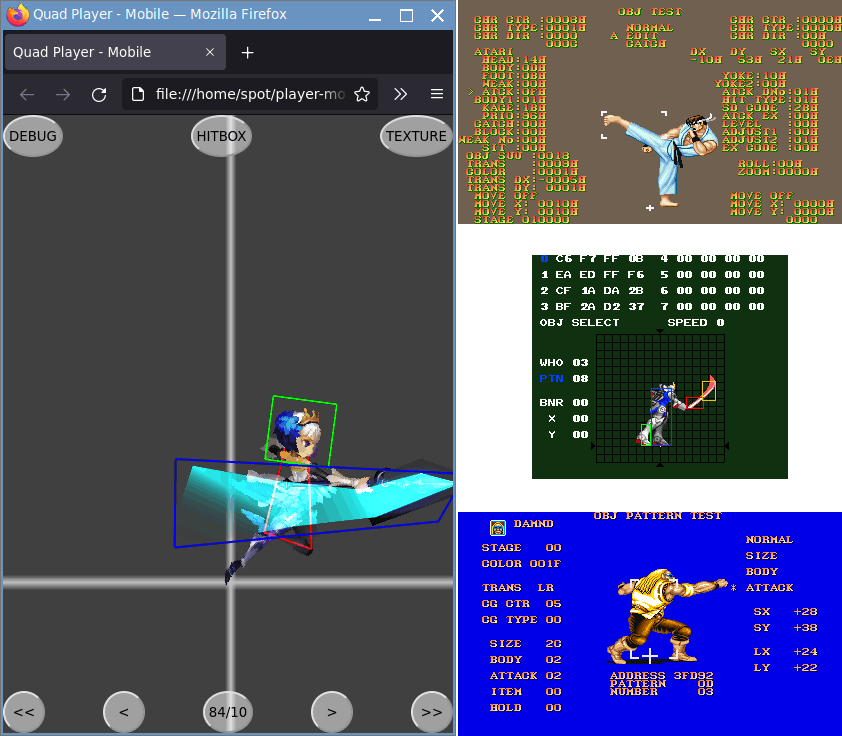Hi quqr! Nice work on converting QUAD to Spine2D format! I was wondering is it even possible because fundamentally they are both very different format.
-
So far, the files I tested are the ones with obvious MBS + FTX pairs. Momohime_Battle.mbs doesn't have obvious FTX to pair with, so it is possible you are using wrong FTX textures. I would suggest you to use Momohime_Battle_drm.mbs instead to make sure you are always using the correct textures.
-
That is correct. Not all layer are textures data, the can also be vertex color / fogquad only. That's why it doesn't have srcquad.
Here is an example - Gwendlyne's slash effect are vertex color only. And they are not using normal blending mode, but addition blending mode.

I already reverse PS2 Odin Sphere main executable for all 6 blending modes in the game (but 4 of them are unused). I haven't reverse blending modes for other consoles yet, so they only have normal blending mode. Quad Player doesn't draw them in TEX mode, but you can still see them in LINE mode to confirm they exists.
- Sorry I don't know. Linking to other quad files, and anything related to that are all currently under research. I am hoping for a breakthrough on it for upcoming v0.6 update.
Good luck for your QuadToSpine project!

Hi, rufaswan,
I'm working on a program that converts *.quad to Spine json and have some issues during the development process.
Was there something missing from the quad file or were these keyframes discarded during development by Vanillaware?
Looking forward to your response!